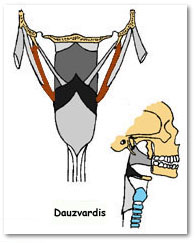Try NASA
--------------------------------------------------------------------------------
I thought I would bring the Nolman valve to the attention of the explorers at NASA.
I sent the following email to them about space sickness, if they test and prove the theory, it would be a documented innovative neurological discovery with implications in multiple neurological disorders...
Subject: Space sickness, ICP, CSF circulation and the Nolman valve.
To:
[email protected]
I visited your website here...
http://www-nesb.larc.nasa.gov/NNWG/...ARC/arc82_1.htm
It is my theory that yawning not only helps to
equalize the air pressures allowing our ears to "pop"
but that it also helps to circulate and equalize the
pressures of our cerebrospinal fluid.
I think that a lot of the symptoms of "space sickness"
are caused by and related to cerebrospinal fluid
pressure.
If you could measure the cerebrospinal fluid pressure
changes before/during/after a yawn I think you will
get more answers to space sickness, how yawning
affects cerebrospinal fluid pressure and why some
people get sick more than others.
It is my theory that yawning cleans the brain, that it
accellerates the circulation of cerebrospinal fluid.
It does this during the deepest part of the breath,
the airpassageway expands and pulls downward on the
hyoid bone. The hyoid bone is attached to the styloid
process of each temporal bone by muscles and
ligaments. The pulling of the styloid process
(thorn-like protrusions) of the temporal bones causes
a slight movement or flexion of the temporal bones
which alters the volume of the cranial vault and the
pressure of the csf within.
To see my theory click here...
http://www.members.shaw.ca/hilaryking/Oldbrain1.htm
I think your equipment may have the ability to prove
my theory and may be able to teach more about the
fluctuation of intracranial pressure as it relates to
space sickness. Please test it if you can.
Brian Nolman
*********************************
I don't know if I will get an answer or if they will even read it, but I gave it a shot anyway. If they prove it, they might find a way to reduce space sickness out and about the planet, but here on earth it will benefit those with cerebrospinal fluid pressure disorders.



